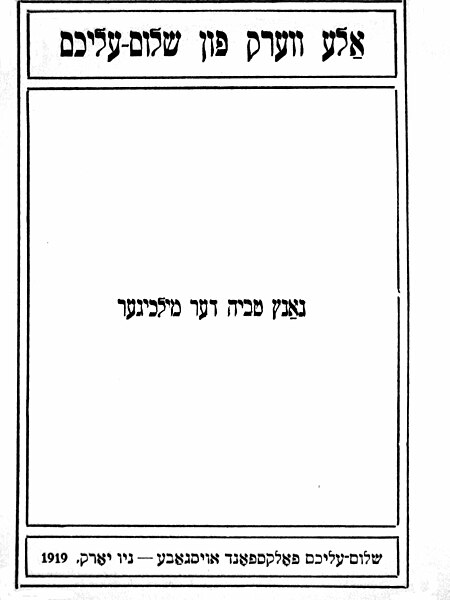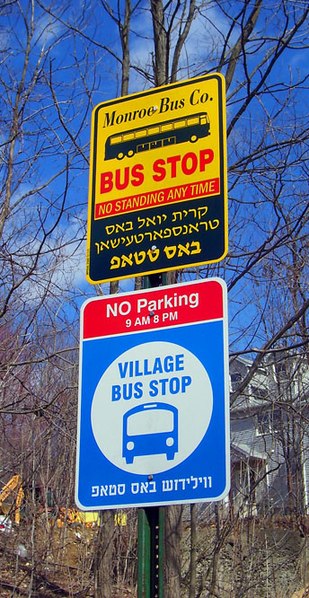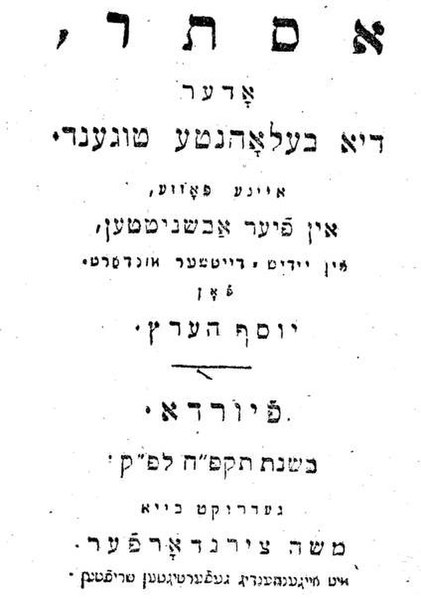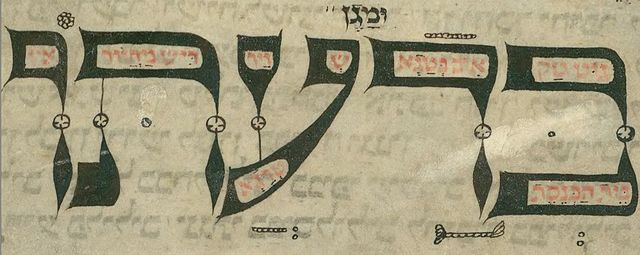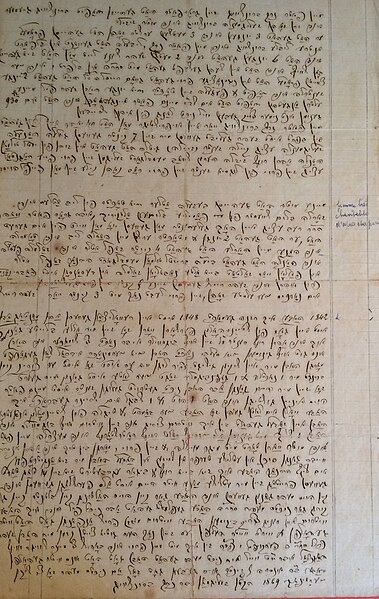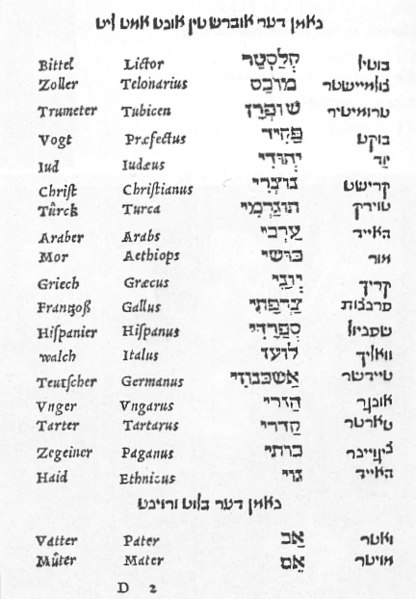Yiddish orthography is the writing system used for the Yiddish language. It includes Yiddish spelling rules and the Hebrew script, which is used as the basis of a full vocalic alphabet. Letters that are silent or represent glottal stops in the Hebrew language are used as vowels in Yiddish. Other letters that can serve as both vowels and consonants are either read as appropriate to the context in which they appear, or are differentiated by diacritical marks derived from Hebrew nikkud, commonly referred to as "nekudot" or "pintalach". Additional phonetic distinctions between letters that share the same base character are also indicated by either pointing or adjacent placement of otherwise silent base characters. Several Yiddish points are not commonly used in any latter-day Hebrew context; others are used in a manner that is specific to Yiddish orthography. There is significant variation in the way this is applied in literary practice. There are also several differing approaches to the disambiguation of characters that can be used as either vowels or consonants.

Photograph of Itzik Fefer with handwritten Yiddish text
Traditional orthography
Soviet orthography
Transliteration in Yiddish alphabet of English text on bus stop signs in Kiryas Joel, New York. This is completely unpointed; for example stop is written סטאפ rather than סטאָפּ
Yiddish is a West Germanic language historically spoken by Ashkenazi Jews. It originates from 9th century Central Europe, providing the nascent Ashkenazi community with a vernacular based on High German fused with many elements taken from Hebrew and to some extent Aramaic. Most varieties of Yiddish include elements of Slavic languages and the vocabulary contains traces of Romance languages. Yiddish has traditionally been written using the Hebrew alphabet; however, there are variations, including the standardized YIVO orthography that employs the Latin alphabet.
The opening page of the 1828 Yiddish-written Jewish holiday of Purim play Esther, oder die belohnte Tugend from Fürth (by Nürnberg), Bavaria.
The calligraphic segment in the Worms Machzor. The Yiddish text is in red.
The South-West Yiddish account of the life of Seligmann Brunschwig von Dürmenach describes, among other things, the anti-Semitic events of the revolutionary year 1848. In the collection of the Jewish Museum of Switzerland.
A page from the Shemot Devarim (lit. 'Names of Things'), a Yiddish–Hebrew–Latin–German dictionary and thesaurus, published by Elia Levita in 1542


